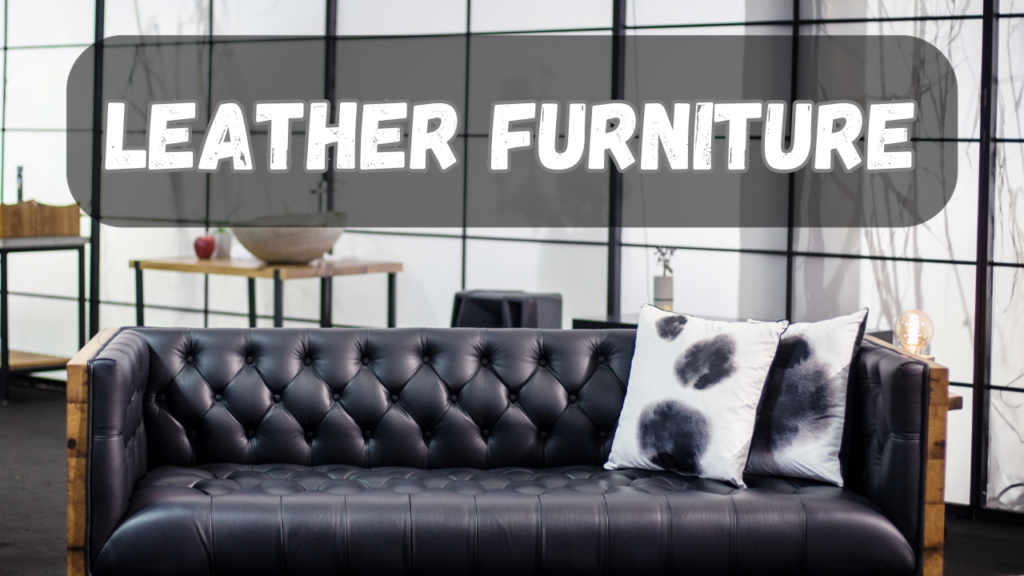Leather furniture is stylish, comfortable, and long-lasting, but over time, it can develop cracks, scratches, tears, or fading. Instead of replacing your expensive leather couch or chair, you can easily repair it at home with the right techniques and tools. This guide will show you how to fix common leather furniture issues and restore its beauty. With proper care, cleaning, and timely repair, you can extend the life of your furniture.
From simple DIY patch kits to conditioning treatments, you’ll learn effective methods to maintain a fresh, elegant look without professional help. Regular upkeep not only saves money but also keeps your furniture looking brand new for years.
1. Identify the Type of Damage
Before starting the repair process, determine the type of damage your leather furniture has:
- Scratches and Scuffs: Small surface marks that don’t penetrate deeply.
- Cracks: Dry leather that has split but is still attached.
- Tears and Holes: Areas where the leather has completely separated.
- Fading and Discoloration: Leather that has lost its color due to sun exposure or wear.
2. Gather Your Repair Supplies
Depending on the type of damage, you’ll need different materials:
- Mild soap and water – for cleaning the leather
- Leather conditioner – to restore moisture
- Leather repair kit – for fixing scratches, cracks, and tears
- Matching leather dye – for recoloring faded areas
- Cotton swabs or sponge – for applying dye or conditioner
- Fine-grit sandpaper (600-1000 grit) – for smoothing cracks
- Super glue or leather adhesive – for tears and holes
- Patch material (if needed) – for large holes
READ MORE: Paint IKEA Furniture
3. Clean the Leather Surface
Start by cleaning the damaged area to remove dirt and oils:
- Mix mild soap with warm water.
- Dip a soft cloth in the solution and gently wipe the surface.
- Let the leather dry completely before proceeding.
4. Repair Scratches and Scuffs
Minor scratches can often be fixed easily:
- Apply a small amount of leather conditioner and rub it in with a soft cloth.
- If scratches persist, use a leather repair cream or wax to fill them in.
- Let the area dry and buff it gently for a smooth finish.
5. Fix Cracks in Leather
If your leather furniture has developed cracks:
- Apply a leather conditioner to hydrate and soften the material.
- Use fine-grit sandpaper to smooth out rough edges.
- Apply a leather filler from a repair kit, spreading it evenly over the cracks.
- Let it dry and sand again if needed before applying dye or polish.
6. Repair Tears and Holes
For more serious damage like tears or holes:
- Apply leather adhesive under the torn edges and press them together.
- If the hole is large, place a patch underneath using strong adhesive.
- Use a leather filler to blend the patch with the surrounding area.
- Once dry, sand lightly and apply matching leather dye to blend the color.
7. Restore Faded Leather
Sun exposure or daily wear can cause leather to lose its color:
- Choose a leather dye that matches your furniture’s original color.
- Apply the dye in thin layers using a sponge or cotton swab.
- Let each layer dry before applying another.
- Finish with a leather sealant to lock in the color.
8. Protect and Maintain Leather Furniture
To keep your leather furniture in top condition:
- Clean it regularly with a damp cloth to remove dust and dirt.
- Apply leather conditioner every few months to prevent drying and cracking.
- Keep furniture away from direct sunlight and heat sources.
- Use a leather protector spray to shield it from spills and stains.
Final Thoughts
Repairing leather furniture is easier than you think! With the right tools and techniques, you can fix scratches, cracks, tears, and fading, making your furniture look brand new again. Regular maintenance will also help extend its life and keep it looking beautiful for years to come.



